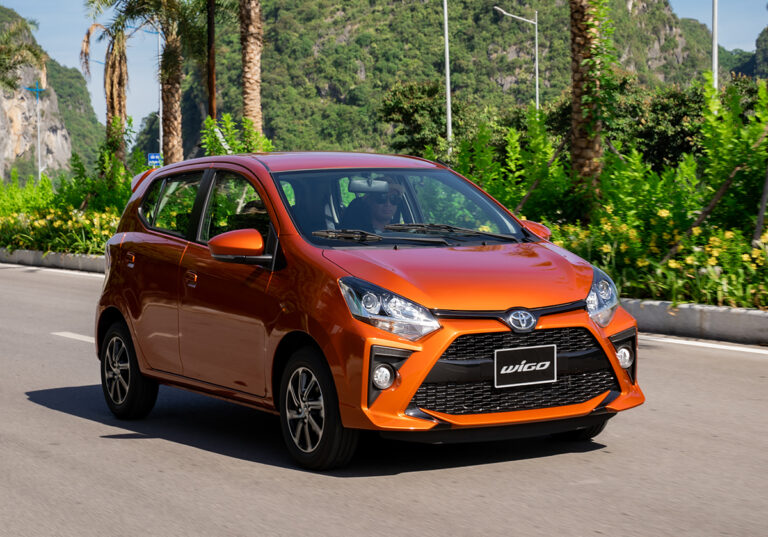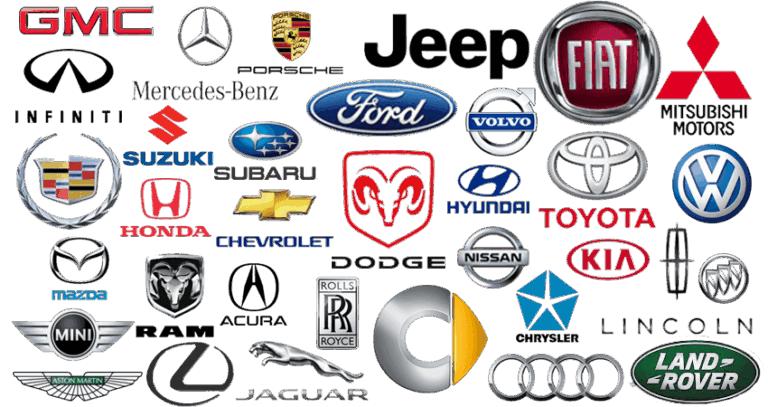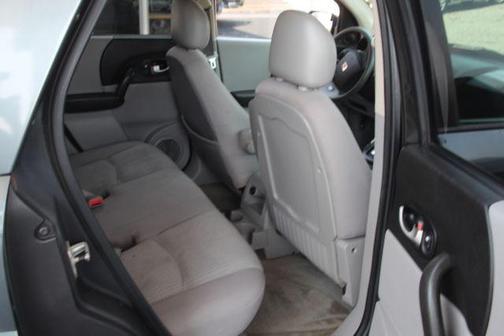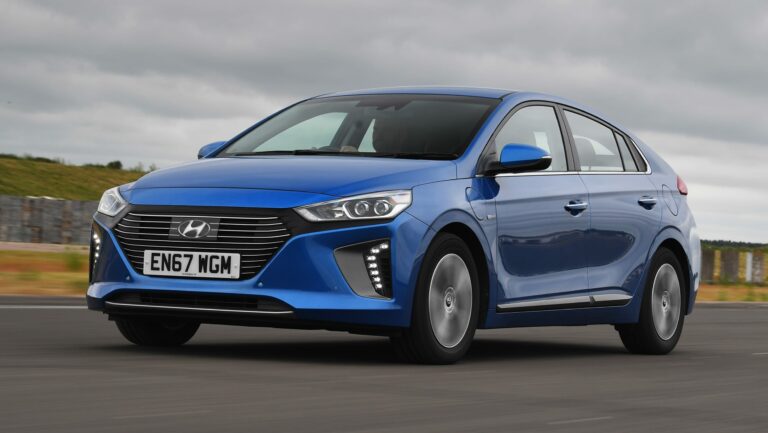What’s The Length With Height And Weight Of A Box Truck For Lease? A Comprehensive Guide to Dimensions and Capacities
What’s The Length With Height And Weight Of A Box Truck For Lease? A Comprehensive Guide to Dimensions and Capacities cars.truckstrend.com
Leasing a box truck is a common solution for businesses and individuals needing to transport goods, move homes, or deliver products without the commitment of purchasing a vehicle. However, the seemingly simple task of choosing a truck can become complex when you consider the myriad of sizes, capacities, and legal requirements. The critical factors that dictate your choice are the truck’s length, height, and weight capabilities. Understanding these dimensions and capacities is paramount for ensuring your cargo fits, the truck can safely handle the load, you comply with road regulations, and you avoid costly mistakes.
This comprehensive guide will delve into the specifics of box truck dimensions and weight ratings, providing you with the knowledge to make an informed decision when leasing your next vehicle.
What’s The Length With Height And Weight Of A Box Truck For Lease? A Comprehensive Guide to Dimensions and Capacities
Understanding Box Truck Dimensions: Why They Matter
The physical dimensions of a box truck—its length, height, and width—directly impact its suitability for your specific task. Misjudging these can lead to anything from inefficient loading to significant property damage or even accidents.
-
Length:
- Interior Cargo Length: This is the measurement from the inside of the rear door to the bulkhead behind the cab. It determines how much linear space you have for your cargo.
- Overall Vehicle Length: This includes the cab, box, and any extended features like liftgates. It’s crucial for navigating tight turns, parking spaces, and ensuring the truck fits within certain delivery zones or property lines.
- Impact: A longer truck offers more volume but can be harder to maneuver in urban environments or residential areas.

-
Height:

- Interior Cargo Height (Clearance): The vertical measurement inside the box from the floor to the ceiling. Essential for fitting tall items like refrigerators, shelving units, or stacked boxes.
- Exterior Vehicle Height: The total height from the ground to the highest point of the truck. This is perhaps the most critical dimension for safety, as it dictates whether the truck can pass under bridges, tunnels, drive-thru overhangs, or into parking garages without striking overhead obstructions. Many bridges have clearance signs; ignoring these can lead to catastrophic accidents.
- Impact: Taller trucks offer more vertical space but require careful route planning to avoid low clearances.

-
Width:
- Interior Cargo Width: The measurement from wall to wall inside the box. Important for fitting wide items like furniture or appliances.
- Exterior Vehicle Width: The total width of the truck, including mirrors. Relevant for navigating narrow streets, alleys, or loading docks.
- Impact: Standard box trucks typically have fairly consistent interior widths, often around 96 inches (8 feet) wide, but exterior dimensions can vary slightly.
Common Box Truck Sizes and Their Typical Dimensions
Box trucks are commonly categorized by their cargo box length, typically ranging from 10 feet to 26 feet. While exact dimensions can vary by manufacturer (Ford, GMC, Isuzu, Hino, etc.) and model year, here are general ranges for common lease sizes:
-
10-12 Foot Box Trucks (Small):
- Ideal For: Small apartment moves, local deliveries, hauling tools or equipment.
- Typical Interior Cargo Length: 10-12 ft
- Typical Interior Cargo Height: 6 ft 6 in – 7 ft
- Typical Interior Cargo Width: 6 ft 3 in – 6 ft 6 in
- Typical Overall Vehicle Length: 18-22 ft
- Typical Overall Vehicle Height: 9 ft 6 in – 10 ft 6 in
-
15-16 Foot Box Trucks (Medium):
- Ideal For: 1-2 bedroom apartment moves, small business deliveries, light commercial use.
- Typical Interior Cargo Length: 14-16 ft
- Typical Interior Cargo Height: 6 ft 8 in – 7 ft 2 in
- Typical Interior Cargo Width: 7 ft 6 in – 7 ft 10 in
- Typical Overall Vehicle Length: 22-25 ft
- Typical Overall Vehicle Height: 10 ft – 11 ft
-
20-22 Foot Box Trucks (Large):
- Ideal For: 2-3 bedroom house moves, larger commercial deliveries, hauling bulkier items.
- Typical Interior Cargo Length: 19-22 ft
- Typical Interior Cargo Height: 7 ft – 7 ft 6 in
- Typical Interior Cargo Width: 7 ft 8 in – 8 ft
- Typical Overall Vehicle Length: 28-32 ft
- Typical Overall Vehicle Height: 11 ft – 11 ft 6 in
-
24-26 Foot Box Trucks (Extra-Large):
- Ideal For: 3-5+ bedroom house moves, significant commercial hauling, freight transport.
- Typical Interior Cargo Length: 23-26 ft
- Typical Interior Cargo Height: 7 ft 6 in – 8 ft 6 in
- Typical Interior Cargo Width: 8 ft – 8 ft 2 in
- Typical Overall Vehicle Length: 33-36 ft
- Typical Overall Vehicle Height: 11 ft 6 in – 12 ft 6 in
Deciphering Box Truck Weight Capacities
Beyond physical dimensions, a box truck’s weight capacities are equally, if not more, important for safety, legality, and operational efficiency. Overloading a truck is illegal, dangerous, and can lead to severe damage to the vehicle and potential fines.
-
Gross Vehicle Weight Rating (GVWR):
- Definition: This is the maximum permissible total weight of the fully loaded truck, including the vehicle itself, fuel, passengers, and all cargo. It’s a critical safety standard set by the manufacturer.
- Importance: GVWR is the primary factor in determining whether a Commercial Driver’s License (CDL) is required. In the United States, trucks with a GVWR of 26,001 pounds (approximately 11,794 kg) or more typically require a CDL. Most smaller and medium box trucks available for standard consumer lease (e.g., 10-22 ft) fall below this threshold, making them non-CDL vehicles. Larger trucks (24-26 ft) can sometimes approach or exceed this, so always confirm.
-
Payload Capacity:
- Definition: This is the maximum weight of cargo that the truck can safely carry. It’s calculated by subtracting the truck’s curb weight (the weight of the empty truck with full fluids) from its GVWR.
- Calculation: Payload Capacity = GVWR – Curb Weight.
- Importance: This is your usable carrying capacity. Always ensure your total cargo weight, plus any additional equipment or passengers, does not exceed this figure.
-
Curb Weight:
- Definition: The weight of the empty truck, including all standard equipment, fuel, and necessary fluids.
Typical Weight Capacities by Truck Size
Similar to dimensions, weight capacities vary by specific model and manufacturer. The following are general ranges:
-
10-12 Foot Box Trucks:
- Typical GVWR: 8,500 – 10,000 lbs (Non-CDL)
- Typical Payload Capacity: 2,500 – 4,000 lbs
-
15-16 Foot Box Trucks:
- Typical GVWR: 11,000 – 14,500 lbs (Non-CDL)
- Typical Payload Capacity: 4,000 – 6,500 lbs
-
20-22 Foot Box Trucks:
- Typical GVWR: 16,000 – 22,000 lbs (Non-CDL)
- Typical Payload Capacity: 6,000 – 10,000 lbs
-
24-26 Foot Box Trucks:
- Typical GVWR: 23,000 – 26,000 lbs (Often Non-CDL, but verify as some models might exceed)
- Typical Payload Capacity: 10,000 – 15,000 lbs
Factors Influencing Dimensions and Weight
While the ranges above are helpful, remember that specific truck models can differ:
- Manufacturer and Model: Different brands (e.g., Ford E-Series, GMC Savana, Isuzu NPR, Hino 195) will have slightly different specifications.
- Chassis Type: The underlying frame (light-duty vs. medium-duty) impacts weight capacity.
- Body Type: A standard dry freight box will differ from a refrigerated (reefer) unit, which adds weight for insulation and cooling equipment.
- Liftgate/Ramp: While incredibly useful for loading, liftgates add considerable weight to the truck’s curb weight, thereby reducing its available payload capacity.
Choosing the Right Box Truck for Lease: Practical Advice
-
Assess Your Cargo Thoroughly:
- Volume: Measure the largest items you need to transport (e.g., sofa, refrigerator, mattress) and ensure they fit both in length and height.
- Weight: Estimate the total weight of all your cargo. If moving heavy items like machinery or a large volume of books, a higher payload capacity is crucial. Err on the side of caution.
- Fragility: Consider how you’ll pack and secure items. You’ll need space for padding and tie-downs.
-
Consider Your Route and Destination:
- Overhead Clearances: Plan your route. Know the external height of your leased truck and avoid roads with low bridges, tunnels, or parking garage entrances. Many truck-specific GPS apps can help with this.
- Maneuverability: If you’re navigating tight city streets, residential cul-de-sacs, or crowded loading docks, a shorter truck might be a better choice, even if it means making more trips.
-
Understand Driver’s License Requirements:
- For most personal moves or local business needs, a standard driver’s license suffices for trucks under 26,001 lbs GVWR. Always confirm the GVWR of the specific truck you intend to lease.
-
Lease vs. Rent:
- Rental: Typically short-term (daily, weekly) for one-off moves or temporary needs.
- Leasing: Long-term (months to years) for consistent commercial use, offering potential tax benefits and predictable monthly costs. The focus of this article is applicable to both, but "lease" implies a longer commitment where detailed planning is even more crucial.
-
Pre-Lease Inspection Checklist:
- Before driving off, confirm the actual dimensions and weight capacities (often listed on a sticker inside the door or cab).
- Check tires, lights, fluid levels, and ensure the liftgate (if equipped) is functional. Document any existing damage.
Challenges and Solutions
-
Challenge: Overloading:
- Risk: Fines, mechanical failure, increased braking distance, loss of control, tire blowouts.
- Solution: Know your cargo’s weight. If unsure, use a public weigh station (e.g., truck stops). Always choose a truck with a payload capacity exceeding your estimated load.
-
Challenge: Low Clearances:
- Risk: Striking bridges, overhangs, causing significant damage to the truck and infrastructure.
- Solution: Always know your truck’s exact exterior height (often posted in the cab). Plan your route in advance, especially in unfamiliar areas. Avoid residential roads or older urban areas where clearances might be lower.
-
Challenge: Maneuvering and Parking:
- Risk: Accidents, difficulty in tight spots, blocking traffic.
- Solution: If inexperienced, practice driving the truck in a safe, open area. Use mirrors constantly and don’t hesitate to get out and look (G.O.A.L – Get Out And Look) or ask for a spotter. Consider a truck with a shorter wheelbase if your routes involve frequent tight turns.
Estimated Lease Price Table for Common Box Truck Sizes
Please note: These are estimated daily, weekly, and monthly lease rates for a standard dry freight box truck. Actual prices can vary significantly based on:
- Location: Urban areas typically have higher rates.
- Provider: National chains vs. local businesses.
- Truck Age & Condition: Newer trucks cost more.
- Mileage Limits: Overage fees apply if limits are exceeded.
- Insurance: May or may not be included.
- Specific Features: Liftgates, specialized interiors.
- Time of Year: Peak moving seasons can see higher rates.
| Box Truck Size (Length) | Typical Payload (lbs) | Typical GVWR (lbs) | Est. Daily Rate (USD) | Est. Weekly Rate (USD) | Est. Monthly Rate (USD) | Notes |
|---|---|---|---|---|---|---|
| 10-12 ft | 2,500 – 4,000 | 8,500 – 10,000 | $30 – $60 | $200 – $350 | $700 – $1,200 | Ideal for small moves/deliveries. |
| 15-16 ft | 4,000 – 6,500 | 11,000 – 14,500 | $40 – $75 | $250 – $450 | $900 – $1,500 | Most popular size for residential moves. |
| 20-22 ft | 6,000 – 10,000 | 16,000 – 22,000 | $50 – $90 | $300 – $600 | $1,100 – $2,000 | Good for larger homes/commercial use. |
| 24-26 ft | 10,000 – 15,000 | 23,000 – 26,000 | $60 – $120 | $350 – $750 | $1,300 – $2,500 | Max capacity for non-CDL drivers (verify GVWR). |
(Rates are approximate and do not include fuel, insurance, or potential mileage charges.)
Frequently Asked Questions (FAQ)
Q1: Do I need a Commercial Driver’s License (CDL) to drive a leased box truck?
A1: Generally, no, for most common rental/lease box trucks. A CDL is typically required for vehicles with a Gross Vehicle Weight Rating (GVWR) of 26,001 lbs or more. Most 10ft to 22ft box trucks, and even some 24-26ft models, have a GVWR below this threshold. Always verify the specific truck’s GVWR before leasing.
Q2: How do I know the exact height of the box truck I’m leasing?
A2: Most reputable rental or lease companies will have the exterior height (and often interior dimensions) listed on a sticker inside the truck’s cab (often near the driver’s seat or on the dashboard) or readily available from the rental agent. Always confirm this number before driving, especially if you have low clearance areas on your route.
Q3: What’s the average fuel economy of a box truck?
A3: Fuel economy varies significantly based on truck size, engine type (gasoline vs. diesel), load weight, driving conditions, and driving habits. Smaller box trucks (10-16 ft) might get 10-15 miles per gallon (MPG), while larger trucks (20-26 ft) often average 8-12 MPG. Diesel engines are generally more fuel-efficient than gasoline, especially under heavy loads.
Q4: Can I put a liftgate on any box truck?
A4: While many box trucks can be fitted with a liftgate, it’s an added feature that needs to be specified when leasing. Liftgates add to the truck’s curb weight, which reduces its available payload capacity, and can also increase the overall length slightly. Ensure your lease agreement includes a liftgate if you require one.
Q5: How do I calculate the payload I need for my move or delivery?
A5: To calculate the payload you need, simply estimate the total weight of all the items you plan to transport. If moving household goods, a rough estimate is around 1,000-1,500 lbs per fully furnished room. For commercial goods, refer to your inventory’s weight specifications. Always add a buffer to your estimate.
Q6: What’s the difference between leasing and renting a box truck?
A6: Renting is typically for short-term use (daily, weekly) and is common for one-off personal moves or temporary business needs. Leasing is a longer-term agreement (months to years) more suited for businesses requiring a consistent fleet or dedicated vehicle without the upfront cost and maintenance responsibilities of ownership.
Conclusion
Navigating the world of box truck leasing requires a thorough understanding of their dimensions and weight capacities. The length, height, and payload are not just numbers; they are critical factors that determine the success, safety, and legality of your transportation task. By carefully assessing your cargo, planning your routes, and knowing the capabilities of the truck you intend to lease, you can avoid common pitfalls and ensure a smooth, efficient, and compliant operation. Thorough research and asking the right questions upfront will save you time, money, and considerable hassle in the long run, making your box truck leasing experience a positive one.






